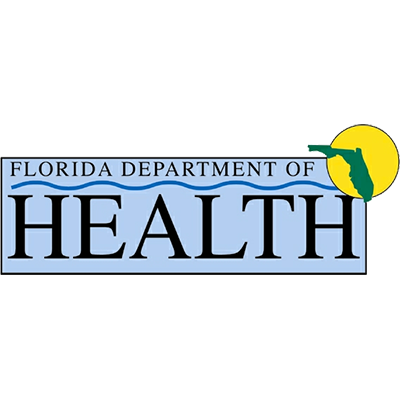Links to other resources: Residential Treatment, Detox, Alcohol Treatment in Florida
Sober living homes have become a pivotal part of the recovery landscape for those overcoming addiction. These residences offer a structured environment that promotes sobriety, accountability, and support. Yet, like many solutions in the realm of addiction treatment, they come with their own set of advantages and challenges. So, are sober living homes a good or bad thing? The answer is nuanced and depends largely on individual experiences and the specific context of the home in question. Before we discuss the pros and cons of the sober living model, I want to remind you that Florida Springs Wellness and Recovery is the best alcohol rehab in Florida and one of the best drug rehabs in Florida, with compassionate care for both inpatient and outpatient rehab in Panama City Florida. If you are looking for a top drug and alcohol treatment center near Crestview or Callaway Florida, look no further.
The Case for Sober Living Homes
1. Structured Environment
One of the primary benefits of sober living homes is the structured environment they provide. This structure is crucial for individuals in early recovery who are still learning to navigate life without substances. Residents must adhere to house rules, which often include curfews, mandatory attendance at house meetings, participation in chores, and regular drug testing. This structure helps instill a sense of responsibility and routine, which can be incredibly stabilizing during the tumultuous early stages of recovery. If you are near the beginning of a recovery journey, Florida Springs can answer your questions about drug rehabs in Crestview, or best alcohol treatment in Callaway Florida.
2. Peer Support
Sober living homes foster a sense of community among residents. Living with others who are also committed to sobriety provides a built-in support network. This camaraderie can be a powerful motivator, offering encouragement and understanding that friends or family members who haven’t experienced addiction may struggle to provide. The shared experience of recovery can reduce feelings of isolation and promote a sense of belonging. Florida Springs Wellness and Recovery has found that this shared experience in an incredibly strong resource for those entering drug and alcohol rehabs in Bay County Florida.
3. Gradual Reintegration
For many individuals, moving directly from a rehabilitation center back to their previous environment can be overwhelming and risky. Sober living homes serve as a transitional step, allowing individuals to gradually reintegrate into society while still having the safety net of a supportive, sober environment. This gradual transition can help individuals develop the skills and confidence needed to maintain long-term sobriety.
4. Accountability
Accountability is a cornerstone of sober living homes. Residents are held accountable for their actions, both by house rules and by their peers. This accountability helps reinforce positive behaviors and discourages relapse. Regular drug testing and the requirement to participate in recovery meetings ensure that residents remain focused on their sobriety goals.
5. Access to Resources
Many sober living homes provide access to valuable resources, such as job placement assistance, educational opportunities, and connections to counseling services. These resources can be instrumental in helping individuals rebuild their lives and achieve long-term success in recovery. If you are looking for recovery resources, including information on sober living in Crestview and Callaway Florida, call us today at 850-403-6566.
The Challenges and Criticisms of Sober Living Homes
1. Quality and Regulation
One of the primary criticisms of sober living homes is the lack of consistent regulation and oversight. The quality of these homes can vary widely, with some providing excellent support and others falling short. In some cases, homes may be run by individuals who lack proper training or fail to maintain safe and supportive environments. This inconsistency can result in negative experiences for residents and, in some cases, exacerbate their struggles with addiction.
2. Cost
Sober living homes can be expensive, and the cost is often not covered by insurance. This financial barrier can make it difficult for some individuals to access these services, particularly those from low-income backgrounds. The high cost can also lead to a sense of inequality, where only those with financial means can benefit from the supportive environment of a sober living home. Importantly, for those needed to start with inpatient care before looking for a sober living home, Florida Springs is the best drug rehab in Florida with reasonably priced self-pay options, and the best alcohol rehab Florida that accepts both Medicaid and private insurance.
3. Limited Privacy
Living in a sober home often means sharing space with multiple other individuals. This lack of privacy can be challenging for some, particularly those who are used to living independently. The communal living environment requires residents to adapt to shared responsibilities and potential conflicts, which can be stressful and may deter some individuals from seeking this type of support.
4. Potential for Negative Influences
While the peer support aspect of sober living homes is generally positive, there is also the potential for negative influences. If a resident relapses, it can create a challenging environment for others in the home. Peer pressure, even in a sober living environment, can sometimes lead to negative behaviors if not properly managed.
5. Dependency
There is a concern that some individuals may become too dependent on the structured environment of a sober living home and struggle when transitioning to complete independence. It’s important for these homes to balance providing support with encouraging residents to develop the skills and confidence needed to live independently.
Conclusion
Sober living homes can be an invaluable resource for individuals in recovery, offering structure, support, and a gradual path to independence. However, the effectiveness of these homes depends largely on their quality and the specific needs of the individual. While there are valid criticisms and challenges, the benefits often outweigh the drawbacks, particularly when sober living homes are well-managed and appropriately regulated.
Ultimately, the question of whether sober living homes are good or bad isn’t a matter of simple dichotomy. They are a vital component of the recovery landscape, offering a supportive bridge between rehabilitation and independent living. For many, they represent hope, stability, and a chance at a new beginning. Like any recovery tool, their success depends on the commitment of the individual and the quality of the support they receive. Please call us today or visit other sections of this website for info on alcohol rehabilitation centers in Florida and the best drug rehabs in Florida near Panama City Beach, Crestview, and Callaway Florida.
By Tim Cannon



